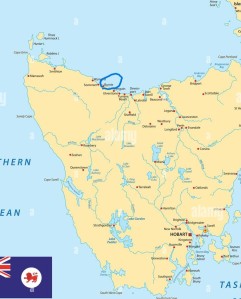
Burnie (circled) is on the northern coast of Tasmania.
Compared to mainland Australia Tasmania looks ‘small’ but to give you a better idea of the size of Tasmania the island is a similar size to Ireland, and larger than Belgium, Denmark or Sri Lanka.
Once again, the shuttle bus service was free to visit the town. When the bus stopped near the town centre the Lady Mayoress of Burnie, Teeny Brumby, boarded to welcome us to her town. She had her chain of office around her neck but not the cloak.
It was a nice touch and must have been tiering for her because she welcomed each of the buses – Coral Princess had 1900 passengers, but I don’t know how long she kept up the welcoming.
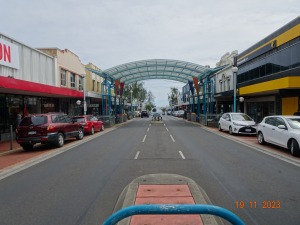
Sunday in Bernie – the main street was quiet
There was a small local craft market near were the coaches stopped, but all the main street shops were closed except for the Red Cross shop – again.

The local beach was popular for exercise.
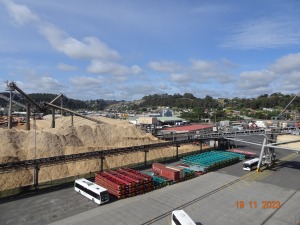
One of Burnie’s main exports is wood chip – nearly two million tons a year and nearly a million tons of logs.
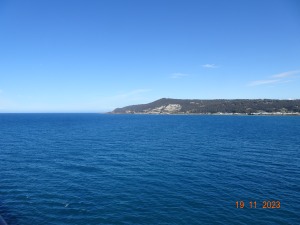
Emu Bay as we sailed from Burnie.
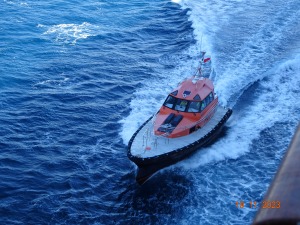
Pilot boat coming alongside to ferry the pilot back ashore.
Photo taken from our balcony.
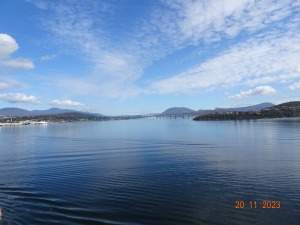
It was an overnight sail from Bernie to Hobart.
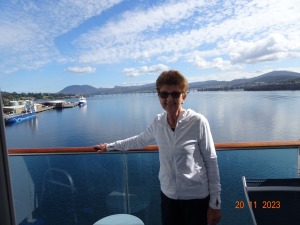
View from our balcony as we moved alongside.
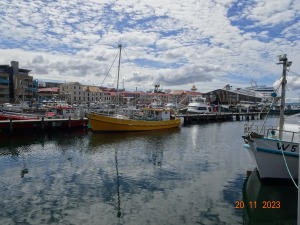
The boat harbour and the Coral Princess can just be seen on the right side of the photo.
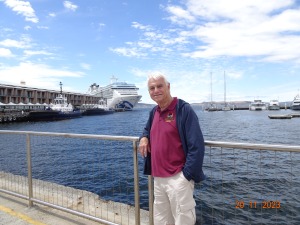
Later in the morning the light was different. Coral Princess in the background.
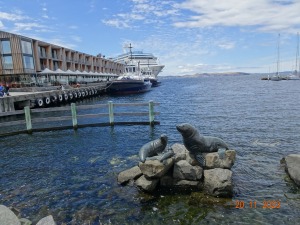 Seals in the harbour – statues
Seals in the harbour – statues
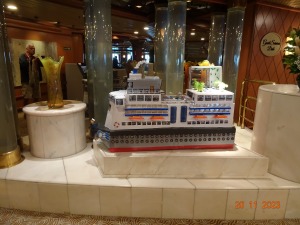
There was a competition on the ship for creating a model. The above is the winner – it took the creator & his wife four days of solid work. The model was made from cardboard.
You cannot see in the above photograph but each porthole on the model has the face of a different crew member. See below.
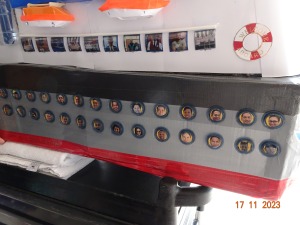
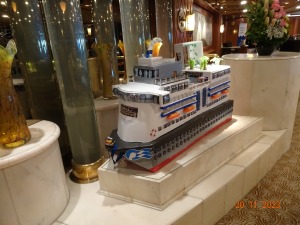
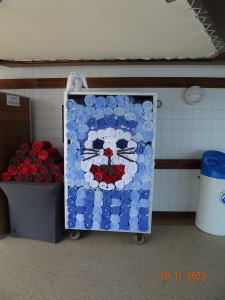
The swimming pool crew did not just stack towels . . . .
There was a small museum onboard about how things were ‘done’ in earlier times. It was interesting and I was surprised to see a BISNC vessel.
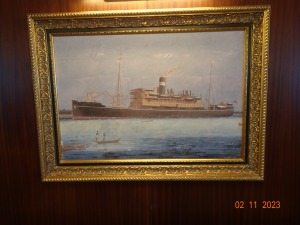
When I was at sea it was with this company British India Steam Navigation Co Ltd. (I could not see or work out the ship’s name.)

This one was easier P&O Moldavia – 1922 built in Birkenhead (the town where I was born) by Cammell Lairds Ship building.
She was built for the Australian run – her final voyage was in September 1937 from Sydney to the UK.
In April 1938 she was sold for the breakers yard in Newport, Monmouth shire.
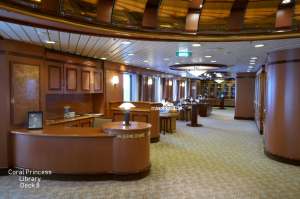
I was returning a book to the ship’s library and noticed a middle-aged lady (couldn’t say old lady because I think I am older than her) sorting returned books into alphabetical order.
She was using the area on the left of the picture.
The lady was not in uniform nor did she have a badge indicating that she was a member of the crew so I asked if she was a crew member.
‘No Dear’ she replied, “I just like to keep busy.’
Then it occurred to me that perhaps she and her husband were the couple who had been sailing in Coral Princess for a long time and had been on TV.
I asked if she was the lady who had been onboard for 450 days, ‘No Dear’ she replied, ‘I think it is nearly closer to 700 days.’
Then we were interrupted as other passengers entered to return books.
###########
All of a sudden it is time to pack – 28 days can go very fast on a holiday.
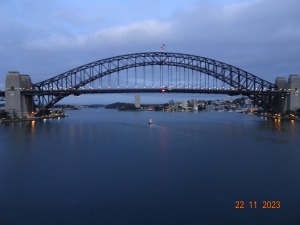
Welcome to Sydney at 5.30 am, at least it was warm enough for shorts.




 Close enough for me . . .
Close enough for me . . . Peaceful and calm as we enter the Bay.
Peaceful and calm as we enter the Bay.
 Virgin beaches
Virgin beaches The entrance through which we passed to enter Wineglass Bay.
The entrance through which we passed to enter Wineglass Bay. Blue on Blue with our wake drifting astern.
Blue on Blue with our wake drifting astern. At peace with the world – our ship is hardly moving.
At peace with the world – our ship is hardly moving.

